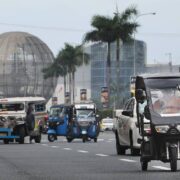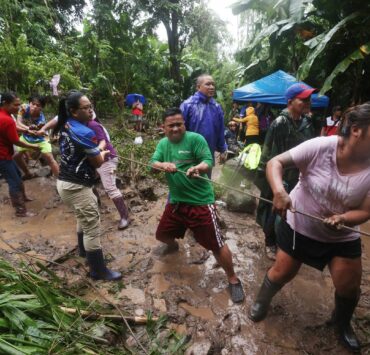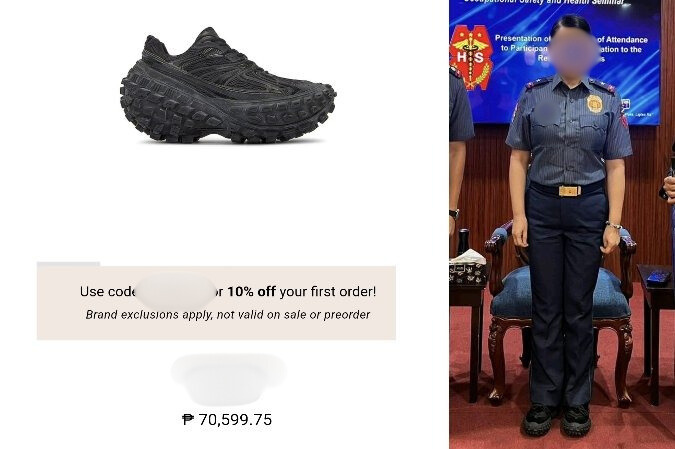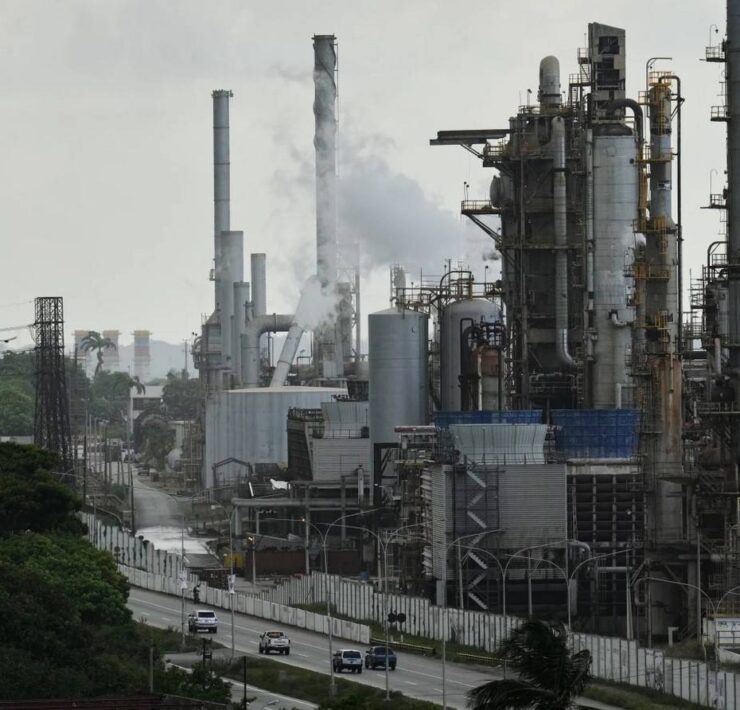‘Brace for impact!’: To be rammed, drenched in WPS
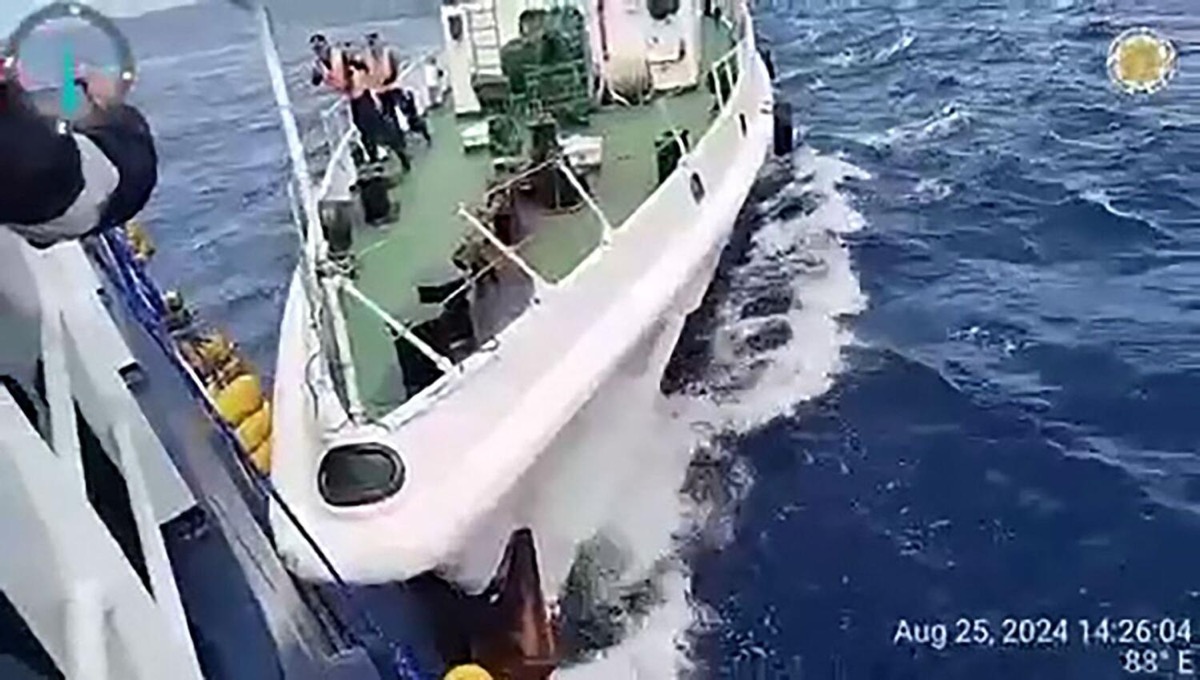
BRP DATU SANDAY, WEST PHILIPPINE SEA —A small wooden chair that got snapped in half was proof of the lethal nature of the attack.
“Brace for impact!” shouted a crew member, moments before the collision, as jets of water struck this Bureau of Fisheries and Aquatic Resources (BFAR) vessel near Escoda (Sabina) Shoal in the West Philippine Sea, on Aug. 25.
About 20 kilometers from the shoal – a new flashpoint in the simmering maritime conflict between Manila and Beijing – the China Coast Guard (CCG) vessel 21551 had rammed the starboard side of our ship, the Datu Sanday, a 30-meter civilian patrol vessel.
“What are you doing?” a reporter yelled at the Chinese crew. “Stop this. You are inside the Philippine exclusive economic zone (EEZ).”
“Stop, stop!” echoed the other Philippine crew and media on board.
But the ramming was just a taste of what was to come.
Later, a veteran Filipino sailor would describe it as the “worst” among the incidents he had experienced after multiple resupply missions and maritime patrols in the disputed waters.
At 1:46 p.m, the CCG ship with bow No. 4202 fired a water cannon at the port side of the Datu Sanday, narrowly missing the ship.
Along with media colleagues and some crew members, I had positioned myself on the deck, camera and phone ready to document everything. Everyone wore life vests, painfully aware of what might happen. This wasn’t the crew’s first rodeo, after all, as China’s water cannon attacks were, by now, a regular occurrence.
26 radio challenges
A People’s Liberation Army Navy ship with bow no. 626, five CCG vessels, and a Chinese maritime militia ship encircled and blocked the Datu Sanday several times. In response, the Filipino crew issued at least 26 radio challenges, telling the Chinese to “steer clear of our route.”
The message: “Your unsafe maneuvers and dangerous actions against a government of the Philippines vessel within the Philippines’ exclusive economic zone have been recorded and are in violation of international law and Philippines’ national law.”
“Stop these unsafe actions and do not interfere with this legal maritime patrol,” it added.
The Chinese responded, insisting they were in Beijing territory. They repeatedly ordered the Datu Sanday via radio communications to “leave the area,” or “face the consequences.”
In fact, we were about 1,200 kilometers from China’s nearest major landmass, Hainan Island.
Escoda, a coral reef formation with a lagoon at the center, lies about 139 km off Palawan province, well within the Philippines’ 370-km EEZ. Since April 16, the PCG’s largest ship, the BRP Teresa Magbanua, has been anchored near the shoal, angering China.
At 2:13 p.m., the CCG vessel 4202 moved closer to our ship and fired high-pressured water cannons on its port side, as other vessels encircled us.
The jets of water sent the media and the crew scurrying for safety. As I ran, one of the straps on my life vest got caught on the door’s lever handle. Before I knew it, I was screaming as the water hit my body. I scrambled to untangle myself, worried for my life.
Inside the ship, everybody was drenched, gasping for air. Through all this, we were still recording what we could, through the windows.
There was a loud slamming that caused the ship to tremble and shake.
A reporter had taken shelter behind one of the rigid hull inflatable boats at the back of the ship, as water cannons blasted from practically all angles. He barely made it to safety.
3 PH flags
Three Philippine flags hoisted on the ship were also doused with water, as the Chinese targeted the ship’s navigational equipment at the roof.
The Chinese vessels moved closer, halting the water attack. But the harassment did not stop there.
Making dangerous maneuvers, a Chinese maritime militia ship with bow no. 00226 came in close contact with the ship.
The air wasn’t only filled with tension but noise, as the other ships blasted their horns repeatedly.
“Go away,” a CCG crew member shouted at us.
At one point, it seemed there was no safe place to hide, as five CCG vessels fired their water cannons all at once, at all sides of the Datu Sanday, all while they were ramming the ship. (I counted at least six times.)
From my hiding place, I could hear howling outside, like a supertyphoon barreling into our corner of the ocean. I could hardly see what was happening, as the jets of water painted the glass windows white from all angles.
Some of the Filipino crew rushed to secure the doors, but plenty of water still rushed in.
“They want us to capsize,” a crew member said. By then, most of us were huddled in the quarterdeck, together with the captain. The other crew ran downstairs to check the situation.
For an hour, there had been no letup in the water cannon attack. Finally it stopped at 3:02 p.m.
As I surveyed the damage, I observed dents on the port and starboard sides of this ship, and some of its railings were deformed. All our equipment, sleeping bags, and everything else the eyes could see, were drenched in water.
Engine failure
I saw cracks on some windows and the ceiling. Sparks crackled from an electrical outlet. We were still lucky, I realized, because at least the ship didn’t catch fire.
The greatest damage, however, ultimately forced the Datu Sanday to abandon its humanitarian mission: The ship had suffered an engine failure.
Still, what mattered most to those aboard the Datu Sanday that day was that we were all alive.
“Thank you, Lord!” some crew members said, making the sign of the cross.
Soon, a headcount was made to ensure everyone was accounted for. We learned later that a crew member on a different BFAR vessel had fallen overboard and had been rescued.
As the group gathered at the mess area, a crew member showed us the chair cut in half, eliciting wry smiles.
The worst was over, but the intimidation, far from it.
As the Datu Sanday sailed away, a number of CCG ships closely tailed us, as though making sure we were truly leaving Escoda Shoal.












